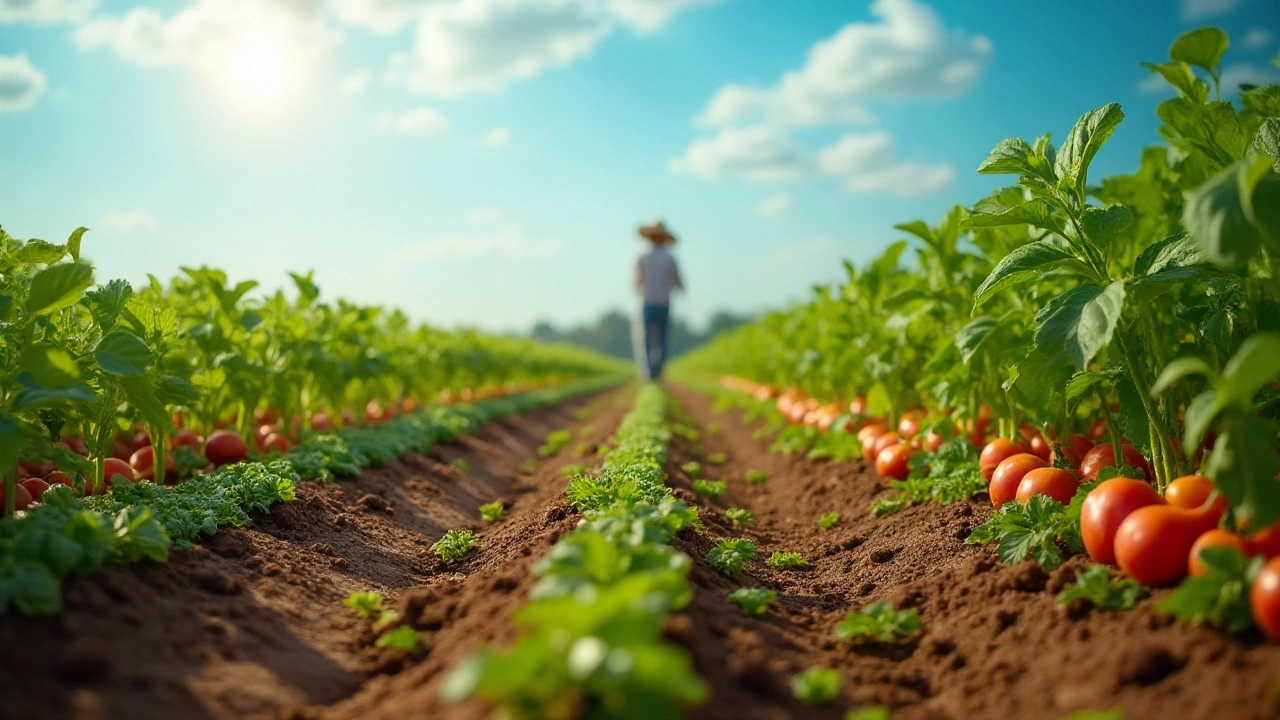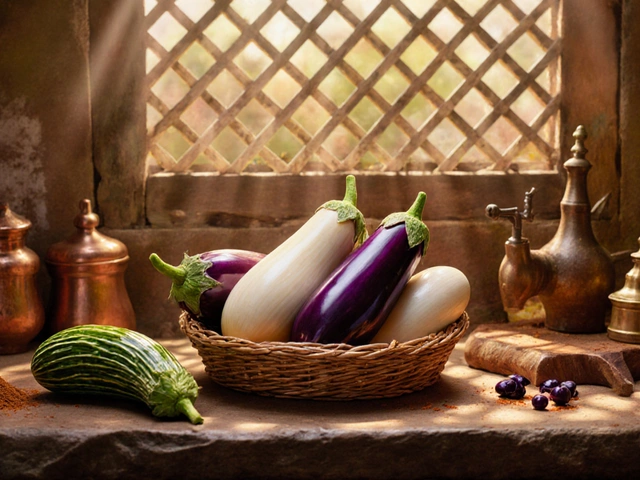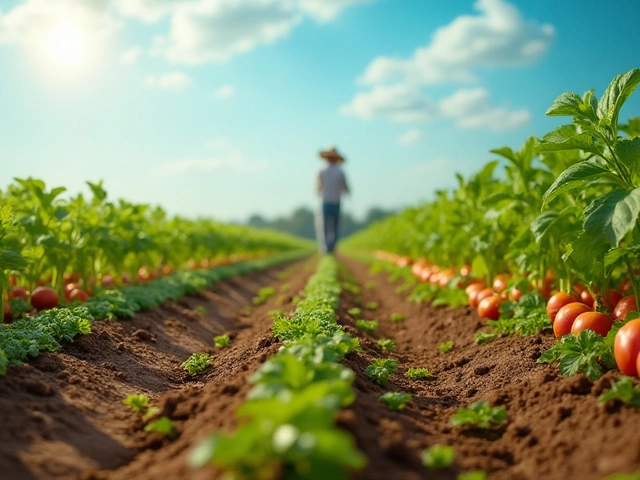India’s vast and varied landscape offers an incredible opportunity for cultivating a wide variety of crops. For farmers looking to increase their income, choosing the right vegetable can make all the difference. But which crops bring the highest returns? This question is crucial for those wanting to make their farming endeavors more profitable.
While different regions have unique agricultural strengths, there are several key crops known for their profitability across the nation. By taking into account factors like climate, soil type, and market demand, farmers can make informed decisions that enhance their yield and earnings. In this article, we will explore some of the most profitable vegetables to grow in India and provide useful tips on how to cultivate them successfully. Whether you're a seasoned farmer or new to agriculture, this guide aims to provide valuable insights for maximizing your farming potential.
- Introduction to Profitable Crops in India
- Factors Influencing Crop Profitability
- Top Lucrative Vegetables to Cultivate
- Cultivation Tips for Indian Farmers
- Challenges and Solutions in Vegetable Farming
Introduction to Profitable Crops in India
India's agricultural landscape is as rich and diverse as its cultural tapestry. Encompassing a wide variety of climates and soil types, from the Himalayan ranges in the north to the coastal plains in the south, this country offers an ideal setting for cultivating a multitude of high-value crops. The secret to achieving financial success in agriculture often lies in selecting crops that are both in demand and well-suited to the local environment. As vegetable gardening gains momentum in India, more farmers are exploring which organic treasures can bring them the most profit—and rightfully so.
One cannot overlook the impact of evolving dietary trends, both at home and abroad, which play a crucial role in defining profitable crop choices. For example, the increasing global demand for organic and health-centric foods gives farmers an opportunity to capitalize on growing crops like spinach, broccoli, and kale. These vegetables not only carry a high price tag in urban markets but are also becoming household staples. A report from the Indian Agricultural Department notes, "The domestic demand for organic produce has been growing at an annual rate of 25%, and vegetables are at the helm of this surge."
India’s rich tapestry of climates makes it possible to cultivate crops that can yield high financial returns, and vegetables are key players in this field. The allure of being able to harvest multiple times a year complements the expanding domestic and international markets, creating a fertile ground for profitable agricultural ventures. While the climatic benefits certainly provide the foundation, the rising awareness about health benefits catapults vegetables to a position of high demand and profitability. A growing number of consumers are not just looking for freshness, but also the promise of nutrition and safety in what they choose to eat, making these crops a valuable investment for dedicated farmers.
Wise stewardship of the land can amplify these opportunities further. As India moves towards more innovative agricultural practices, the focus should also remain on sustainable growth. This means choosing not just any high-value crop but the right kind that supports the ecosystem. Practicing crop rotation, maintaining soil health, and managing water usage efficiently are all part of building a profitable venture that withstands the test of time. Ultimately, the vast expanse of India is a testament to its potential as a powerhouse for profitable farming, where the right crop choices coupled with efficient practices can lead to thriving success stories.
Factors Influencing Crop Profitability
Delving into crop profitability requires understanding a variety of underlying factors that can significantly impact the financial returns from vegetable farming in India. The choice of crop is an essential starting point to turning a good yield into a profitable venture. The most immediate considerations involve climatic conditions and geographic suitability. Climatic adaptability plays an important role as different vegetables thrive in specific weather patterns. For example, a crop like cauliflower does exceptionally well in cooler climates, while okra prefers the warmth of the sub-tropical zones. Identifying the best match between local weather and vegetable requirements helps leverage the natural climate as an ally rather than an adversary.
Another pivotal factor is soil quality, which serves as the foundation for any successful crop. Understanding soil type is crucial because it informs irrigation practices, fertilization needs, and even crop rotation strategies. Certain soils might be nitrogen-rich naturally, demanding different nutrient balance strategies compared to more sandy terrains. Conducting regular soil tests is advisable as it equips farmers with precise knowledge to amend their practices to support profitable crops. Connectivity to markets cannot be overstated; proximity to local or urban markets eases logistics, reduces transport costs, and ensures that fresh produce remains impeccable upon arrival. A strong market connection can often be a defining line between profitable and less profitable farming.
Market demand is another critical area that needs continuous monitoring. Vegetables like capsicum or cherry tomatoes may enjoy high demand in urban settings, riding on health trends and changing consumer preferences. Effective marketing of vegetables also involves understanding seasonal demands and leveraging storage techniques. Innovative practices, such as hydroponics and organic farming, can be explored to capitalize on niche markets, offering smaller, quality-focused yields. In this context, a quote that resonates is,
"Understanding market dynamics and consumer behavior is as critical as understanding what lies beneath the soil." - [Agricultural Insights, 2023]
Lastly, labor and resource availability influence profitability directly. Efficient labor ensures timely prevention of pest attacks, effective irrigation, and overall farm management. A table might show an average cost-benefit analysis of labor vs. mechanization, revealing long-term gains with technological investments. Farmers must weigh the initial costs of machinery against the recurrent costs of manual labor. Support from government policies and subsidy schemes can also substantially alter financial outcomes by reducing initial capital barriers and offering financial relief during adverse climatic seasons. Staying informed about available support initiatives and using them strategically can pivot farms towards profitability.
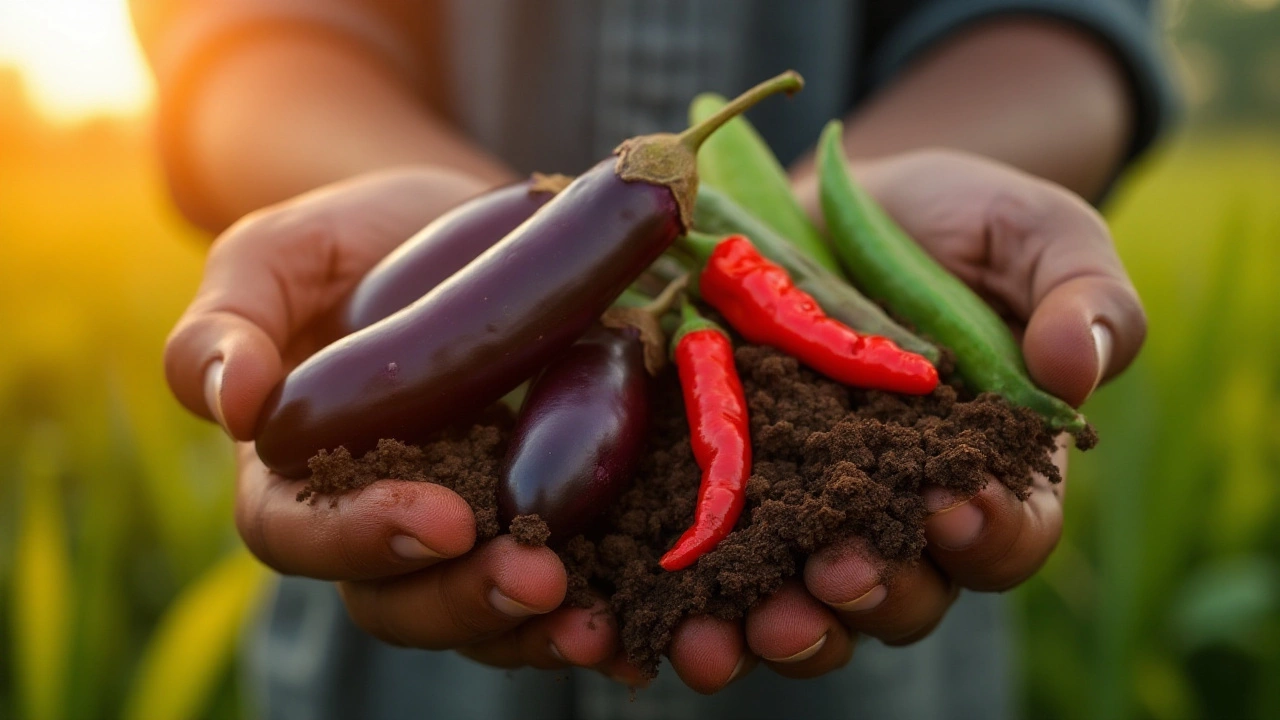
Top Lucrative Vegetables to Cultivate
India is home to a wealth of opportunities when it comes to vegetable gardening, especially for those seeking to maximize their financial returns. The country's diverse climates—from the chilly slopes of Himachal Pradesh to the sun-drenched plains of Maharashtra—offer perfect growing conditions for certain profitable crops in India. With the demand for fresh produce consistently on the rise, investing in these crops can transform a farmer's livelihood. One of the standout choices is the versatile potato. As a staple in Indian households, potatoes are not only in constant demand but are also crop-cycling friendly. This means they can be integrated smoothly into existing cultivation schedules, reducing downtime for the soil and optimizing productivity.
Another promising vegetable is the sought-after tomato. Whether you're in Punjab or Karnataka, tomatoes flourish across diverse landscapes due to their adaptable nature. They are renowned for yielding high returns and require relatively moderate investment when it comes to resources. The market for tomatoes remains resilient throughout the year, catering to both domestic consumption and industrial needs, such as ketchup and canned produce. To enhance your tomato yield, consider implementing drip irrigation systems, which preserve water resources while ensuring plants receive adequate moisture. According to the Indian Journal of Agricultural Sciences, “drip irrigation can increase water use efficiency by up to 90% when applied correctly.”
The future of farming in India lies in augmenting crop yields sustainably, with a focus on high-demand vegetables. - Dr. Reddy from the Agricultural Research Forum
As we delve deeper into lucrative vegetable options, the demand for capsicum cannot be overlooked. Its vibrant colors and nutritional benefits have pushed its popularity in both local markets and upscale retailers. Growing capsicum can be particularly lucrative for farmers adopting polyhouse or greenhouse methods, which protect crops from unpredictable weather and pest infestations, ultimately leading to better quality and higher prices. However, keep in mind the initial investment for setting up these protected growing environments; yet, the return on investment often justifies the expense.
When considering profitability, cash crops like chilies also deserve mention. India’s spicy palate drives a substantial consumption of both fresh and dried chilies, bolstering their standing as a rewarding growth option. To maximize your gains, it's crucial to focus on hybrid varieties that are resistant to common diseases and pests, thereby reducing losses. Diversifying chili cultivation with companion planting—like carrots or onions—can further optimize space and resources, contributing to soil health and pest control.
Cultivation Tips for Indian Farmers
Incorporating effective strategies into your farming practices is crucial to achieving higher yields and maximizing profits, especially in a diverse agricultural country like India. Profitable crops in India require not just optimal seeds but efficient management of resources and innovative farming methods. Understanding the local climate is the foundational step. Begin by analyzing your region's seasonal patterns, as this knowledge will guide you in selecting the right crops. For instance, crops like okra and bitter gourd thrive in India's tropical and subtropical climate, offering high returns when grown in the appropriate conditions.
Soil quality is another fundamental aspect that can significantly impact your yield. Conduct soil tests before planting to ascertain nutrient levels such as nitrogen, phosphorus, and potassium. This analysis helps in determining the type and amount of fertilizers required. Using organic matter, such as compost or green manure, enhances soil fertility and improves water retention. Farmers should rotate crops annually to prevent soil depletion and reduce pest and disease buildup, ensuring sustainable yields over the years.
Water management is vital in vegetable gardening India. Utilizing technologies like drip irrigation can help in efficiently using water resources, preventing wastage, and ensuring crops receive adequate moisture throughout their growth period. India is prone to unpredictable rainfall; thus, collecting rainwater during monsoon and creating water reservoirs can sustain crops during dry spells. Additionally, mulching with organic materials like straw or leaves can minimize water evaporation from the soil, keeping it hydrated for longer.
Access to quality seeds can make a substantial difference in crop success. Certified seeds provide better resistance to local diseases and typically result in higher yields. Farmers should purchase seeds from reputable suppliers and verify their authenticity. In recent times, there has been a shift towards adopting hybrids and genetically modified varieties that promise enhanced productivity. However, doing so may require additional input in terms of fertilizers and pesticides. An effective pest management plan should balance chemical and natural methods to protect crops while maintaining soil health.
Market awareness is equally crucial. Stay updated on the current market trends to determine the demand and pricing of different crops. Growing income-generating crops India is not just about production but also about timely access to markets to ensure the best prices. Networking with other farmers and market agents might help in better understanding the supply-demand dynamics. Furthermore, farmers can explore options like direct selling to consumers or establishing cooperative societies to minimize mediatory costs and enhance profits.
"In farming, experience matters, but adaptation to new technologies and practices determines profitability," says Dr. Ramesh Kumar, an agricultural scientist with over two decades of experience.
Lastly, be open to learning and innovation. Attend workshops, webinars, and agricultural expos to stay abreast of the latest farming techniques and crop varieties. Many government programs and NGOs offer training sessions for farmers to help them upgrade their skills and adopt new technologies. While traditional knowledge passed down through generations is invaluable, blending it with modern practices could yield unprecedented results, transforming not just your farm but your entire community.
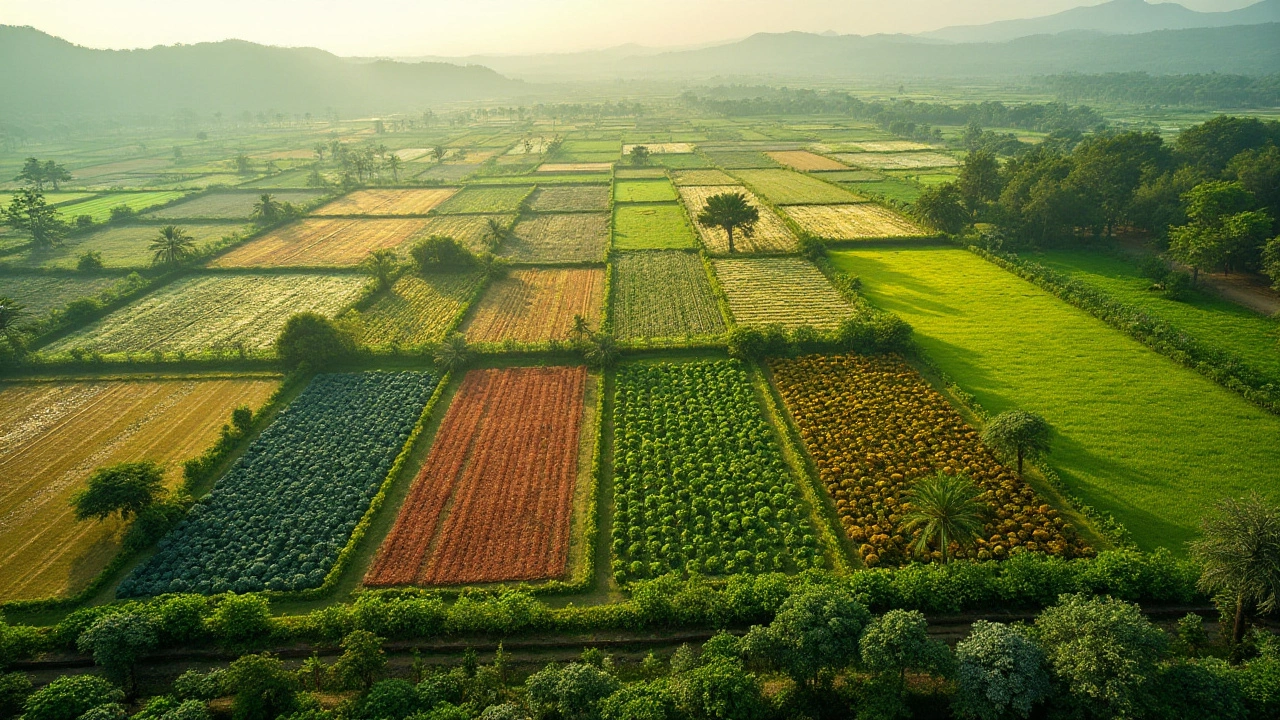
Challenges and Solutions in Vegetable Farming
Growing vegetables in India comes with its unique set of challenges, especially for those aiming to maximize profitability. One predominant issue is the unpredictability of the weather, which can drastically affect crop yield and quality. Erratic monsoon patterns, prolonged droughts, and unexpected frosts are just a few of the climate-related hurdles. Water management becomes crucial as access to consistent irrigation is often limited. Farmers heavily rely on seasonal rains, making their crops vulnerable to fluctuations. Employing modern irrigation techniques, such as drip or sprinkler systems, can not only conserve water but also ensure a steady supply, thereby enhancing productivity.
Pests and diseases present another formidable challenge in vegetable farming. Infestations can wipe out large portions of crops, significantly impacting the farmer's income. Traditional methods of pest control sometimes fall short due to evolving pest resistance, thus necessitating an integrated pest management (IPM) approach. IPM combines biological, mechanical, and chemical strategies to minimize pest damage. Emphasizing the importance of using eco-friendly pesticides, a renowned agronomist once mentioned,
"Sustainable farming practices not only protect the environment but also enhance crop resilience and quality."This highlights the shift towards environmentally conscious farming practices that are gaining popularity.
Market access and price volatility further complicate the journey of Indian vegetable farmers. After putting immense efforts into cultivation, selling produce at a fair price remains elusive for many. Market prices can swing unpredictably, often dictated by middlemen, leaving farmers with marginal profits. Direct marketing strategies, like cooperative societies or digital platforms, can alleviate this problem by connecting farmers directly with consumers. Another solution could involve forming farmers' markets or encouraging farm-to-table experiences that can create a loyal customer base and stable income.
Additionally, the lack of proper storage facilities leads to significant post-harvest losses. Vegetables are particularly perishable and demand adequate storage solutions. Investing in cold storage or warehouse facilities can drastically reduce wastage. Support from government initiatives and agricultural technologies can be pivotal in providing viable storage options. Utilizing packaging innovations and enhanced transportation systems, which preserve the freshness of produce, can further help in retaining the value of vegetables post-harvest.
To summarize, while challenges in vegetable gardening India are not insignificant, they also bring opportunities for innovation and growth. By incorporating modern agricultural techniques and adapting to changing conditions, farmers can overcome these hurdles. Collaborating within farmer networks and remaining informed about the latest agricultural trends helps in navigating the complexities of vegetable farming in India, paving the way for a sustainable and profitable farming future.
